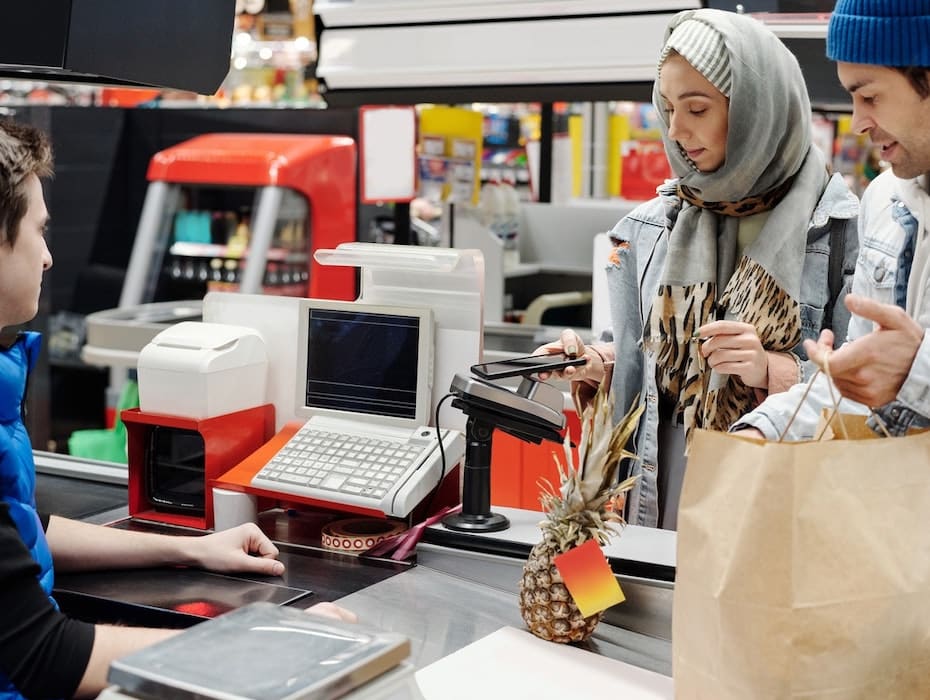Highlights
- To compete in a digital-first retail environment, empowering your employees is essential.
- Building a culture that supports empowerment involves training both managers and frontline employees.
- Retailers must also provide the right tools to enable employee empowerment, including communications solutions.
💁🛒💻 Want to see how a unified communications and collaboration strategy can create an effortless employee experience that allows your team to better serve shoppers at all stages of their journey? Grab our eBook.
Employee empowerment has long been beneficial in retail. However, the benefits of placing more decision-making authority with workers have never been more clear than they are now.
To realize the advantages of employee empowerment, your business must develop and implement an effective strategy. The following is a look at why empowerment is so critical to your retail business and several key ways you can do it the right way.
Why employee empowerment is essential to retail right now
In the digital era, customer expectations for rapid response continue to escalate. People want immediate access to business reps that can solve their issues via their preferred communication channels. This cross-channel digital communications system is necessary for your customer experience and your competitive viability.
Empowered employees can resolve customer problems quickly because they have the authority to make decisions and implement remedies. This process is much faster because it eliminates delays that result when only managers have the authority to fix issues. Delays in your resolution process create pain points for your customers and drive them toward other retailers.
How to do employee empowerment right in retail
The benefits of employee empowerment are only achieved when you do it the right way. Poorly planned and implemented empowerment can actually do more harm than good. It can alienate your workers, lead to poor decisions on service resolution, and undermine your intended outcomes.
The following are several key things you can do to ensure empowerment goes well and that it provides the advantages you seek.

1. Make it a culture
Like anything else you do in a company, success is only possible if an initiative is supported from the top down. Company leadership needs to make it clear that employee empowerment is important to your business operations. This support needs to include regular communication on the matter and functional support of decisions made by empowered employees.
In addition to words, tangible support of empowerment strengthens its value to your culture. Incentives for managers and employees that succeed motivate the desired behaviors. You can base incentives on evidenced improvement to your customer experience or through spot bonuses resulting from anecdotal instances where empowerment leads to a happy customer.
2. Train managers and frontline employees
Making effective service resolution decisions is a skill. It requires an understanding of the company’s philosophy and values, familiarity with service-resolution processes, and effective listening and verbal communication skills.
Frontline employees aren’t the only ones who may need training. Managers who haven’t previously worked in an empowerment culture need to learn how to lead in one. It is difficult for your managers to train employees on how to use decision-making authority unless they understand the culture and can coach proper independent service resolution.
3. Support employee decisions
Employees won’t feel comfortable making decisions if those decisions are undermined or if they are micro-managed throughout the resolution process. Doing these things contradicts the message that employees have the authority to make service decisions.
Support means an employee feels confident that his or her manager will accept the resolution decision. It also means that, even if a manager would have taken a different action in a similar situation, he or she acknowledges and praises the worker for embracing the authority.
4. Learn and retrain
Supporting an empowered employee does not mean you have to blindly ignore mistakes or missteps. If you maintain a positive work culture and earn trust, there is plenty of room to coach team members on improvements to their decision-making process.
Observe for a while rather than confronting each decision immediately, which can be perceived as micro-management. After you get a sense of an employee’s approach, meet with the worker and discuss the resolution process. Invite the employee to share what he or she thinks about when making decisions and enacting remedies.
When you understand the employee’s point of view, you have a better ability to coach for improvement. First, reinforce that you appreciate the independence the person demonstrated. Then, talk about specific ways to improve the resolution process and point to observations you have made.
5. Provide the necessary tools
None of the other strategies described here work if you do not equip your reps with the necessary tech tools. The equivalent is asking a baseball player to hit a certain way to achieve more success and then giving them a bat made of the cheapest wood possible.
A comprehensive cloud-based communications solution is the “bat” your employees need to hit a home run in retail service. It allows for seamless customer interactions across all popular communication channels. Reps can easily shift from one channel to the next to help customers. They can also transfer contacts to another rep if a particular skill or experience is required.
A cloud-based communications system also aids empowerment by:
- Reducing customer frustration: Customers get frustrated by fragmented resolution processes. The seamless experience with unified communications allows one rep to work efficiently to resolve a customer’s problem.
- Simplifying contact tracking: It is easy to track interactions across channels if multiple interactions are needed to learn about, research, and remedy a problem.
- Speeding up communication: Employees are more confident when they can efficiently learn about and fix issues for customers.

Leverage RingCentral for optimal employee empowerment
The competitive nature of retail makes efficiency critical to your success. Empowering employees effectively improves your customer experience and gives you greater efficiency in your service function.
Retail becomes more digitized every day, week, and year. Digital communications solutions are imperative to effective empowerment. Equip your team with the best tools by implementing a cloud-based, cross-channel communications solution from RingCentral.
With RingCentral, your reps can engage customers on their preferred channel, coordinate care among dispersed workers, and move seamlessly from one channel to the next. See our solutions for retail and optimize your employee empowerment.
Originally published Apr 12, 2022, updated Dec 30, 2022





